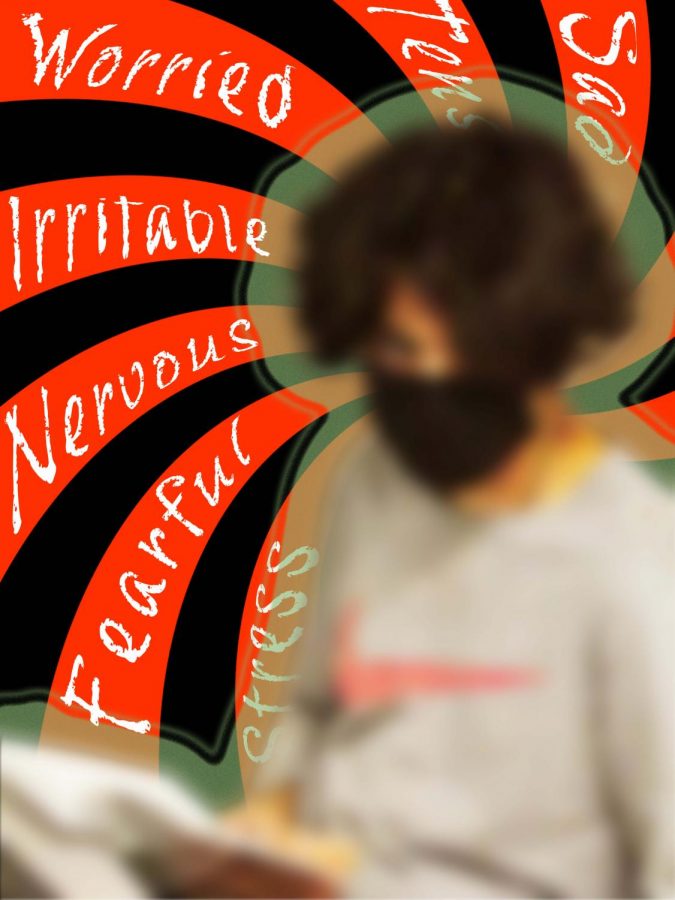Opinion: The thin line between anxiety disorder and feeling anxiety is a dangerous one to walk
The Wellness Center is seeing a rise in anxiety-related visits. Is self-diagnosing to blame?
On September 16th, 2021, after months of therapeutic help I was told that I was going to start medication for a generalized anxiety disorder. As a 17-year-old high school senior, this diagnosis put the pieces together, forming a clearer picture of what was impacting my everyday life.
Since being in distance learning for a year, I have searched for support here at Colton High.
That support is now offered on campus at the Wellness Center.
Since students returned to campus in-person, the Wellness Center has seen over a three times increase in the number of students seeking support.
Over 80 percent of those students are coming in for anxiety-related reasons.
However, only a handful of those students actually suffer from some sort of generalized anxiety.
“Everyone has some level of anxiety and we all need anxiety to gauge danger,” explains Ms. Evelin Villa, Wellness Center Coordinator. “The problem is when we are constantly in danger mode.”
Oftentimes anxiety and feeling anxious are confused because they share common symptoms. These symptoms include feeling worried, fearful, nervous, or sad.
In Ms. Villa’s experience as a therapist, she says it is “pretty noticeable” right away for a trained professional to tell when someone has some sort of generalized anxiety versus just feeling anxious.
It is easier and more accurate when a professional notices the key giveaways of anxiety, such as muscle tension, irritability, tiredness, exhaustion on the body and mind, restlessness, and constantly worrying.
But for someone who is not a professional, it becomes dangerous and less accurate to self-diagnose.
Self-diagnosing is more common now because of the ease with which easy Google searches provide lists of symptoms and medical advise on websites like WebMD and Healthline.
Although medical websites like these can be useful in order to understand symptoms, there is the unintended consequence of leading others to believe what they are feeling is more extreme than it actually is.
This is especially true when it comes to anxiety. If a person researches “feeling anxious,” anxiety-related content pops up, which could ultimately lead them to believe what they are feeling is an anxiety disorder instead of just feeling anxious.
This year, when I was diagnosed with an anxiety disorder, I had no idea what that meant. I believed everyone had anxiety and that my diagnosis was simple and unremarkable.
I was wrong. It was neither simple nor unremarkable.
If you think you have a disorder, it is important to get diagnosed. Disorders are complex and can be different for every individual. To apply a set of “symptoms” to just anyone can be dangerous.
It is dangerous because it leads to self-diagnosing and possible false assumptions about that diagnosis.
You may ignore a medical symptom. You may put yourself in a state of denial. You may miss something you would notice with the help of a doctor.
You may assume more is wrong than actually is.
In cases where a diagnosis is accurate, self-diagnosing can lead to delayed treatment as people often discount symptoms and their severity.
For most of my life, I delayed getting diagnosis and treatment because the symptoms I found online were vague. Not only that, but the people around me constantly assumed their anxious feelings were the result of an actual anxiety disorder.
Self-diagnosing is harmful, but that doesn’t mean if you feel you could have a disorder, to avoid researching. However, if you are not a knowledgeable professional, self-diagnosing can be more harmful than helpful. It is important to recognize the symptoms of any disorder so we can help educate others and find the correct treatment for ourselves.
Otherwise, we could be doing more harm than good.
Recently, the CHS Publications Department experienced a major theft as over $20,000 in photography equipment was stolen from our studio over Spring Break. This included all cameras. Any amount you donate will help rebuild our program. Thank you!

Sadie Larios is a senior at Colton High School set to graduate in 2022. She is an avid movie watcher and music listener. When she is not at...




